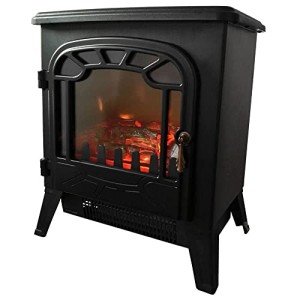The Fireplace: A Warm Embrace of Tradition and Comfort
Fireplaces have actually been an essential part of human habitation for centuries, serving as a source of warmth, an event place, and a sign of convenience. While the modern variations might vary incredibly from their ancient forefathers, the attraction of a fireplace endures. This article explores the numerous elements of fireplaces, including their history, function, types, and maintenance, while also attending to often asked concerns.
The Evolution of Fireplaces
Fireplaces go back to prehistoric times when open flames were used for cooking, heating, and protection from wildlife. Over Buy Fireplaces UK , fireplaces evolved from easy fire pits to the sophisticated performances we see today. Here is a brief timeline of their advancement:
- Prehistoric Era: Cavemen used open flames for heat and cooking. Wind and smoke frequently blew into houses.
- Middle Ages: Stone and brick fireplaces became typical in homes and castles, incorporating chimneys to bring smoke outside.
- Renaissance: Elaborately developed mantels emerged, and fireplaces became centers of social interaction.
- Industrial Revolution: Innovations in heating products led to a variety of designs and performances.
- Modern Era: The advent of gas, electric, and bioethanol fireplaces offered cleaner options to traditional wood-burning units.
Table 1: The Evolution of Fireplaces
| Age | Attributes |
|---|---|
| Prehistoric Era | Open flames for warmth and cooking |
| Middle Ages | Stone and brick structures with early chimneys |
| Renaissance | Elaborate mantels, social centers |
| Industrial Revolution | Diverse designs, development of brand-new materials |
| Modern Era | Gas, electric, and bioethanol options |
The Purpose of a Fireplace
Fireplaces serve dual purposes: they provide physical warmth and produce an emotional environment. Property owners often gather around the fireplace to bond, share stories, and take pleasure in a cozy setting. The glow of a fire can be calming, adding to a sense of relaxation and intimacy. Beyond personal pleasure, fireplaces also provide functional advantages, consisting of:
- Home Heating: Effective heat source, particularly in cooler environments.
- Increased Home Value: A properly designed fireplace can enhance the visual value of a home.
- Emergency situation Heating: In case of power blackouts, wood-burning fireplaces can work as an important heat source.
- Visual Appeal: A centerpiece that contributes to interior decor.
Types of Fireplaces
Today, fireplaces come in various styles and fuel types, accommodating a varied range of preferences and settings. Here are some common types:
Wood-Burning Fireplaces:
- Traditional fire pits
- Timeless masonry fireplaces
- Require substantial maintenance and chimney upkeep
Gas Fireplaces:
- Available in both direct vent and ventless varieties
- Simpler to use and preserve than wood-burning fireplaces
- Supply instant heat with a flick of a switch
Electric Fireplaces:
- Offer associated heat sources without real flames
- Often developed to imitate traditional fireplaces
- Ideal for smaller areas and homes without a chimney
Bioethanol Fireplaces:
- Use bioethanol fuel, providing a sustainable option
- Require no ventilation and can be put anywhere
- Safe and easy to maintain
Table 2: Types of Fireplaces
| Type | Fuel Source | Functions | Maintenance Requirements |
|---|---|---|---|
| Wood-Burning | Wood | High atmosphere, heat source | Routine chimney cleansing |
| Gas | Natural gas or lp | Instantaneous heat | Very little, periodic maintenance |
| Electric | Electrical energy | Easy setup | Extremely low upkeep |
| Bioethanol | Bioethanol fuel | Ventless, portable | Low, mainly cleaning up |
Upkeep and Safety Considerations
Owning a fireplace includes specific duties, particularly concerning its safe operation and long-lasting maintenance. Here are essential upkeep suggestions and safety guidelines:
Maintenance Tips:
- Annual Inspection: Always have your chimney and fireplace checked a minimum of once a year by a qualified technician.
- Regular Cleaning: Clean out ashes and particles after each use, and make sure the flue is open before beginning a fire.
- Look for Cracks: Inspect masonry for cracks or damage to avoid structural problems.
- Use Proper Fuel: Only usage dry, seasoned wood for wood-burning fireplaces; do not burn treated wood.
Safety Guidelines:
- Install Smoke Detectors: Ensure smoke detectors are practical, testing them month-to-month and replacing batteries as required.
- Keep a Fire Extinguisher: Have one nearby, even if a fireplace is used occasionally.
- Supervise Flames: Never leave a fire unattended, and ensure children and pets are monitored around the fireplace.
Frequently Asked Questions (FAQs)
1. How can I decrease smoke from a wood-burning fireplace?
To decrease smoke, use dry, experienced wood, and guarantee that your chimney is tidy and unblocked.
2. Is it safe to utilize gas fireplaces during a gas leak?
Never utilize a gas fireplace during a gas leak. Right away evacuate the location and contact gas services for aid.
3. Can I install an electric fireplace myself?
Electric fireplaces are typically simple to install, but it is suggested to seek advice from professionals to ensure security and compliance with regional building regulations.
4. What is the best kind of fireplace for small areas?
Electric fireplaces or bioethanol models are often best for small spaces, as they do not require comprehensive ventilation or structural adjustments.
Fireplaces have actually transcended their initial function of offering heat to end up being cherished aspects of home design and household life. They stimulate memories of warmth, events, and togetherness while providing functional advantages that improve modern living. By understanding Cheap Fireplaces of fireplaces, their upkeep, and security practices, homeowners can delight in the ageless appeal of this cherished function for generations to come.

